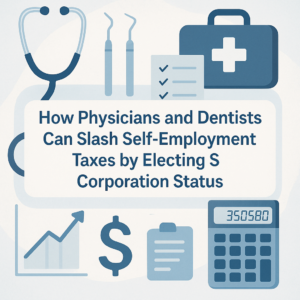Navigating 401(k) to IRA Rollovers
One key aspect of retirement planning is knowing how to manage your 401(k) when transitioning between jobs. Rolling over your 401(k) into an Individual Retirement Account (IRA) can provide greater control over your investments and potentially enhance your retirement savings. This comprehensive guide will help you navigate the complexities of 401(k) to IRA rollovers, focusing on the three types of contributions—pre-tax, Roth, and after-tax (non-Roth)—and how they impact your rollover decisions.
Understanding the Three Buckets in a 401(k)
Workplace retirement plans like 401(k)s are designed to help you save for retirement by allowing you to contribute a portion of your salary into investment accounts with tax advantages. These plans typically consist of three types of contributions, often referred to as “buckets”:
- Pre-Tax Contributions
- Roth Contributions
- After-Tax (Non-Roth) Contributions
Each bucket has unique tax implications and rollover options, which we’ll explore in detail.
Pre-Tax Contributions
What Are Pre-Tax Contributions?
Pre-tax contributions are the most common type of 401(k) contributions. When you make pre-tax contributions, you defer paying income taxes on the money you contribute. Instead, the funds grow tax-deferred until you withdraw them in retirement, at which point they’ll be taxed as ordinary income.
Components of Pre-Tax Contributions
- Salary Deferrals: The portion of your salary you choose to contribute before taxes.
- Employer Matches: Contributions your employer makes to your account, often matching a percentage of your contributions.
- Earnings: Any investment gains accumulated over time.
Rollover Options for Pre-Tax Contributions
When you decide to roll over your 401(k), you have two primary options for your pre-tax contributions:
- Roll Over to a Traditional IRA
- Advantages:
- Continues tax-deferred growth.
- Wider range of investment options.
- Potentially lower fees.
- Considerations:
- Required Minimum Distributions (RMDs) begin at age 75 (age 73 for some older generations)
- Advantages:
- Roll Over to a Roth IRA
- Advantages:
- Future qualified withdrawals are tax-free.
- No RMDs during your lifetime.
- Considerations:
- The rollover amount is added to your taxable income in the year of conversion.
- Potentially pushes you into a higher tax bracket.
- Advantages:
Tax Implications
Rolling over pre-tax contributions to a traditional IRA maintains their tax-deferred status, meaning you won’t owe taxes at the time of the rollover. However, rolling over to a Roth IRA triggers a taxable event, as you’re converting pre-tax dollars into after-tax dollars.
Roth Contributions
What Are Roth Contributions?
Roth contributions are made with after-tax dollars. You pay income taxes upfront on your contributions, but qualified withdrawals during retirement are tax-free, including the earnings, provided certain conditions are met.
Key Features of Roth Contributions
- Tax-Free Growth: Earnings grow tax-free.
- Qualified Distributions: Withdrawals are tax-free if made after age 59½ and the account has been held for at least five years (the “5-year rule”).
- No Income Limitations: Unlike Roth IRAs, Roth 401(k)s don’t have income limits for contributions.
Rollover Requirements for Roth Contributions
Roth 401(k) funds must be rolled over into a Roth IRA to maintain their tax-free growth potential. Rolling these funds into a traditional IRA is not permissible.
Tax Implications
Since you’ve already paid taxes on your Roth contributions, rolling them over to a Roth IRA doesn’t trigger additional taxes. However, the 5-year rule applies separately to your Roth IRA, so it’s important to understand how this affects your withdrawal timing.
After-Tax (Non-Roth) Contributions
What Are After-Tax (Non-Roth) Contributions?
After-tax (non-Roth) contributions are less common but can be a valuable part of your retirement strategy. These are contributions made with after-tax dollars, similar to Roth contributions, but they reside in a separate bucket within your 401(k) plan.
Components of After-Tax Contributions
- Contributions: The after-tax dollars you’ve contributed.
- Earnings: Investment gains accumulated on your after-tax contributions, which grow tax-deferred.
Rollover Strategies for After-Tax Contributions
You have a couple of options when rolling over after-tax contributions:
- Split Rollover
- Contributions to a Roth IRA: Converts your after-tax contributions into a Roth IRA without additional tax since taxes have already been paid.
- Earnings to a Traditional IRA: Keeps the tax-deferred status of the earnings, avoiding immediate taxation.
- Full Rollover to a Roth IRA
- Advantages:
- Simplifies accounts by consolidating funds.
- Future qualified withdrawals are tax-free.
- Considerations:
- The earnings portion rolled over into the Roth IRA is taxable in the year of the rollover.
- Advantages:
Tax Implications
Choosing to roll over the after-tax contributions to a Roth IRA and the earnings to a traditional IRA can optimize tax efficiency. However, rolling both contributions and earnings into a Roth IRA will result in taxation of the earnings at the time of the rollover.
Rollover Strategies
Understanding your rollover options is essential for making informed decisions that align with your financial goals. Let’s explore the different strategies and their tax implications.
Option 1: Roll Over Pre-Tax Funds to a Traditional IRA and Roth Funds to a Roth IRA
- Process:
- Pre-tax 401(k) funds → Traditional IRA
- Roth 401(k) funds → Roth IRA
- Advantages:
- Maintains tax-deferred status of pre-tax funds.
- Preserves tax-free growth of Roth funds.
- No immediate tax consequences.
- Considerations:
- Required to begin RMDs from the traditional IRA at age 75 (or 73 if subject to prior tax law).
Option 2: Roll Over Pre-Tax and After-Tax Contributions to a Roth IRA
- Process:
- Pre-tax 401(k) funds and after-tax contributions → Roth IRA
- Advantages:
- Consolidates accounts.
- Future qualified withdrawals are tax-free.
- Considerations:
- The pre-tax portion and earnings are taxable in the year of the rollover.
- Potentially increases taxable income significantly.
Option 3: Split Rollover for After-Tax (Non-Roth) Contributions
- Process:
- After-tax contributions → Roth IRA
- Earnings on after-tax contributions → Traditional IRA
- Advantages:
- Converts after-tax contributions to tax-free growth.
- Defers taxes on earnings until withdrawn.
- Considerations:
- Requires precise documentation.
- May involve more administrative steps.
Steps to Take Before Rolling Over
1. Review Your Current 401(k) Plan
- Understand Your Options: Some plans allow partial rollovers or in-plan conversions.
- Check for After-Tax Contributions: Not all plans have this feature.
2. Consult with a Financial Advisor
- Personalized Advice: Tailored to your financial situation and goals.
- Tax Implications: Navigate complex tax rules effectively.
3. Consider Your Investment Options
- IRA Investment Choices: Broader range than 401(k) plans.
- Fees and Expenses: IRAs may offer lower-cost options.
4. Evaluate Timing
- Market Conditions: While timing the market isn’t advisable, be mindful of market volatility.
- Tax Year Planning: Assess how the rollover will affect your current year’s taxes.
5. Complete Necessary Documentation
- Direct vs. Indirect Rollovers: Direct rollovers transfer funds directly and avoid withholding taxes.
- Maintain Records: Keep all paperwork for tax reporting purposes.
Conclusion
Navigating a 401(k) to IRA rollover involves understanding the different types of contributions and their tax implications. As a young healthcare professional, making informed decisions about your retirement savings now can significantly impact your financial well-being in the future.
By considering the options for pre-tax, Roth, and after-tax contributions, and how they align with your financial goals, you can optimize your retirement strategy. Remember to consult with a financial advisor or tax professional to ensure that you’re making the best choices for your unique situation.






